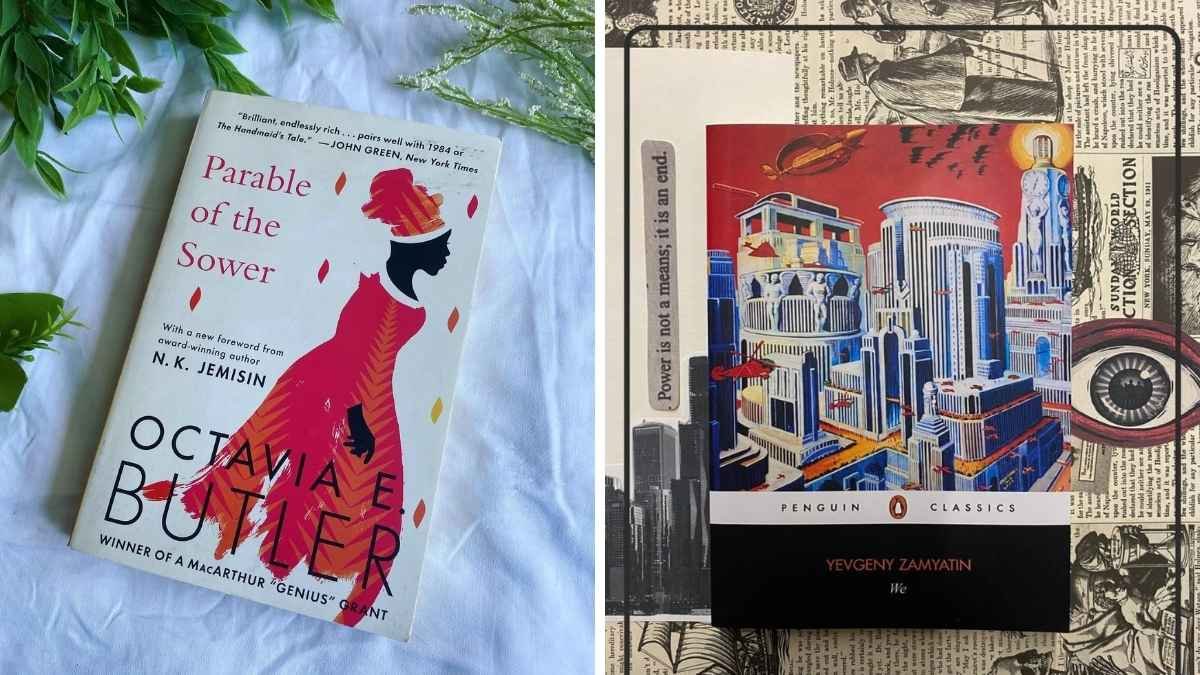
Some history books you read for school. Others you read because you can’t stop turning the pages. These are the rare gems — the ones that read like a tightly wound spy novel or a political thriller, yet every twist is backed by real events, real people, and consequences that shaped the world we live in. If you’ve ever thought history was dull, these books will prove you wrong — gloriously.
Here are the most gripping, cinematic, and unforgettable history books that feel more like adrenaline-filled rides than dusty textbooks.
1. The Splendid and the Vile by Erik Larson

Erik Larson has a unique superpower: he writes nonfiction that breathes. In The Splendid and the Vile, he zeroes in on Winston Churchill’s first year as Prime Minister, when the Nazi blitz rained terror over London and Britain’s future seemed doomed. But this isn’t a dry account of politics and war strategies. It’s a deeply personal chronicle — zooming in on Churchill’s family life, his bold speeches, and even the quirky behaviors that made him such a magnetic wartime leader. The book reads like a thriller because it captures history as it felt to those living it — a moment-to-moment fight for survival.
What makes it all so thrilling? Larson structures his chapters like scenes in a movie, weaving in air raids, intelligence memos, and private diaries. You’ll find yourself tense during meetings at 10 Downing Street, holding your breath as bombs fall over London, and marveling at the psychological warfare Churchill waged with words alone.
2. Killers of the Flower Moon by David Grann

If you think the Wild West ended with cowboys, think again. Killers of the Flower Moon uncovers a true American crime story so shocking and layered, it feels like a noir detective novel set in 1920s Oklahoma. The Osage Nation became astonishingly wealthy after oil was discovered beneath their land. Then, mysteriously, Osage men and women began dying — one by one. What followed was a chilling web of greed, betrayal, and systematic murder, all with a cover-up that reached deep into the white settler establishment.
David Grann’s storytelling is meticulous and quietly suspenseful. He reconstructs the early FBI’s investigation, but also gives voice to the victims — ensuring the story is more than just a crime narrative. The racism, corruption, and legal rot at the heart of this story make it devastating — and essential.
3. Say Nothing by Patrick Radden Keefe

Northern Ireland’s “Troubles” have often been discussed in terms of dates, politics, and factions — but Keefe takes a very different, far more visceral approach. Say Nothing opens with the real-life kidnapping of Jean McConville, a mother of ten, dragged from her home in front of her children. What follows is a haunting unraveling of the violence that gripped Belfast for decades. Keefe doesn’t just explain the conflict; he introduces you to the people who lived it, orchestrated it, and suffered from it, with such clarity that it often feels like a novel written by John le Carré — if le Carré had been a journalist.
What’s most chilling is how moral lines blur across the decades. Heroes become suspects, villains seem sympathetic, and the truth remains elusive. This isn’t just history; it’s an emotional excavation — and the final revelations hit like a punch to the gut.
4. Destiny of the Republic by Candice Millard

You may not know much about President James A. Garfield, and that’s exactly why Candice Millard’s book is such a revelation. Destiny of the Republic tells the tragic story of Garfield — a brilliant orator and reformer who, after only a few months in office, was shot by a delusional assassin. But this isn’t just a presidential biography. It’s part political thriller, part medical mystery, and part indictment of the 19th-century medical establishment.
Millard’s gift is in how she brings everyone involved vividly to life — from Alexander Graham Bell, who races to invent a device to find the bullet, to the ego-driven doctors whose errors ultimately killed Garfield. The story unfolds with such tension that you’ll find yourself silently urging characters to act faster, wiser — even though you already know the outcome.
5. The Ghost Map by Steven Johnson

It starts with a single case of cholera in 1854 in London. Within days, it becomes an epidemic. But instead of dry data, The Ghost Map reads like a forensic thriller about two unlikely heroes: Dr. John Snow, a physician ahead of his time, and Reverend Henry Whitehead, who joined forces to uncover the source of the outbreak. The culprit? A contaminated water pump in Soho. This discovery would not only stop the spread but also completely transform how cities understand public health.
Johnson has a knack for drawing out suspense from science, showing how courage, curiosity, and methodical thinking can change the course of human history. It’s a compelling blend of detective work, social history, and scientific insight — and it races forward with the energy of a medical drama.
6. The Devil in the White City by Erik Larson

Yes, Larson makes the list again — for good reason. The Devil in the White City intertwines two hauntingly parallel stories: the ambitious rise of the 1893 Chicago World’s Fair and the chilling spree of H.H. Holmes, one of America’s first known serial killers. One tale is about architectural genius and national pride; the other is about seduction, murder, and manipulation — both unfolding in the same city, at the same time.
The magic lies in how Larson moves between the glittering dreams of Daniel Burnham and the eerie, calculated moves of Holmes. You’ll feel the pride and anxiety of building something grand — while always aware that something much darker is lurking nearby. It’s a history book, but it reads like a Gothic suspense novel.
7. Midnight in Chernobyl by Adam Higginbotham

There’s no shortage of books on the 1986 nuclear disaster, but none pull you inside the catastrophe with the same depth and narrative drive as Midnight in Chernobyl. Higginbotham meticulously reconstructs the disaster — from the political coverups and flawed engineering to the heroic actions and quiet failures that allowed the explosion to happen. Every chapter increases the tension, as pieces fall into place for a disaster that didn’t have to happen — but inevitably did.
What makes this book gripping is its slow, deliberate pacing — you know something is coming, but when it hits, it still shocks you. It’s part Cold War thriller, part bureaucratic tragedy, and entirely unforgettable. And yes, it reads faster than many novels you’ve read this year.
8. The Looming Tower by Lawrence Wright

This Pulitzer Prize-winning book takes on one of the most consequential stories of our time — the rise of Al-Qaeda and the road to 9/11 — but Wright writes it with the precision and momentum of a Le Carré thriller. He pulls back the curtain on not just Osama bin Laden and Ayman al-Zawahiri, but also on the turf wars between the CIA and FBI that may have blinded U.S. intelligence in the lead-up to the attacks.
Wright’s achievement is making a complex, sprawling topic both human and suspenseful. The personalities are richly drawn, the stakes couldn’t be higher, and the final chapters feel like a slow-motion car crash — you can see what’s coming, but the dread only builds.
9. Empire of Pain by Patrick Radden Keefe

Keefe returns to this list with a scathing, cinematic history of the Sackler family and the opioid crisis. Empire of Pain is not just about business malpractice — it’s about how wealth, legacy, and unchecked power can quietly reshape public health, law, and culture. The Sacklers spent decades crafting a philanthropic image, even as their company, Purdue Pharma, pushed the aggressively marketed OxyContin.
It reads like a legal thriller — boardroom secrets, PR manipulation, court depositions — but it hits harder because every chapter reflects real, ongoing pain. Keefe doesn’t sensationalize; instead, he lets the facts do the damage, and they’re devastating. You’ll walk away shocked, angry, and informed.
10. In the Garden of Beasts by Erik Larson

Rounding out Larson’s trilogy of thrillers is In the Garden of Beasts, a slow-burning psychological history set in Berlin in 1933, just as Hitler seizes power. The story follows William Dodd, the newly appointed American ambassador to Germany, and his free-spirited daughter Martha. As the Dodds try to make sense of Nazi Germany, the tension creeps in like a fog — with every dinner party and public parade revealing more danger beneath the surface.
What’s gripping isn’t just the rise of tyranny — it’s how normal people misunderstand or underestimate it, and how diplomacy falters in the face of evil. Larson masterfully shows the quiet horror of watching a society slide into darkness — slowly, then all at once.
11. A Spy Among Friends by Ben Macintyre

This is espionage at its most twisted — and all terrifyingly true. A Spy Among Friends tells the story of Kim Philby, a British intelligence officer who, while appearing to be the epitome of loyalty, spent decades as a Soviet double agent. Macintyre focuses on Philby’s betrayal of his closest friend, fellow spy Nicholas Elliott, which makes this tale not just a Cold War thriller but an intimate tragedy of trust and deception.
The pacing is pitch-perfect, and Macintyre lays out the betrayals with the flair of a novelist. What makes the book so addictive is how it forces you to ask: how did no one see through him? It’s a story of elite clubs, old-boy networks, and institutional arrogance — all unraveling in the face of a master manipulator.
12. The Warmth of Other Suns by Isabel Wilkerson

While not a thriller in the conventional sense, this book has the emotional urgency and sweeping scope of an epic. The Warmth of Other Suns tells the story of the Great Migration — when six million Black Americans left the Jim Crow South for the North and West — through the intimate lives of three individuals. Wilkerson spent years researching, but what she delivers reads like a richly layered novel, full of tension, heartbreak, and resilience.
Each personal story is filled with suspense — moments of flight, confrontation, survival — that speak to a much larger truth about race and identity in America. The risks these individuals took, the weight of their decisions, and the way Wilkerson threads it all into one powerful narrative will leave you deeply moved and wide awake.






